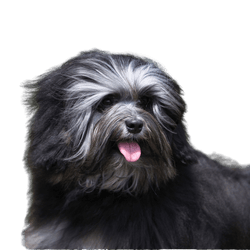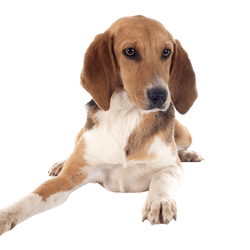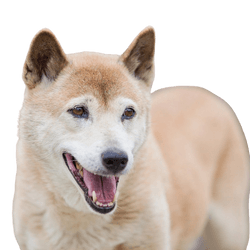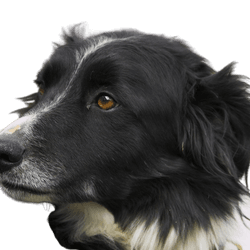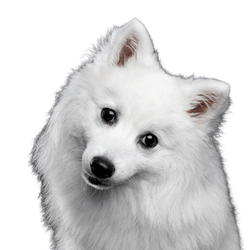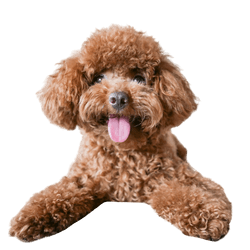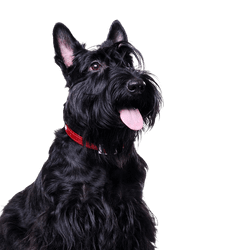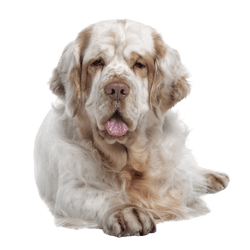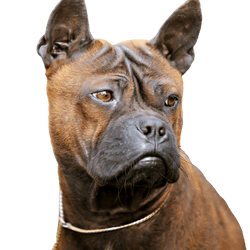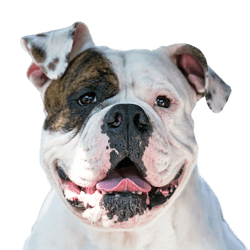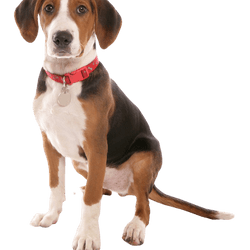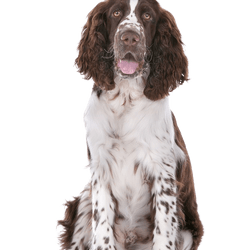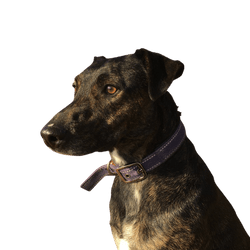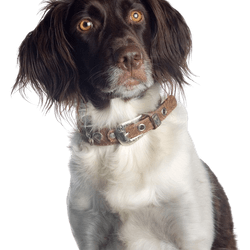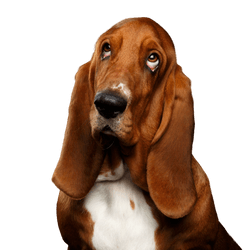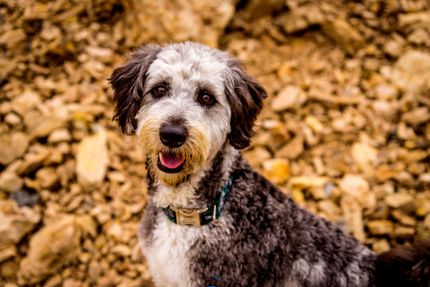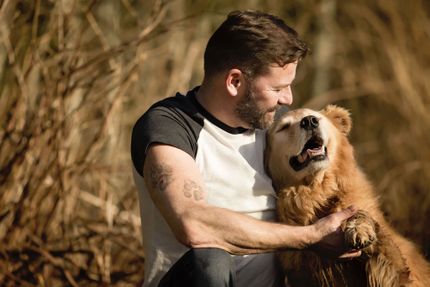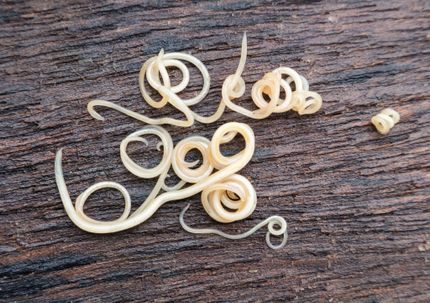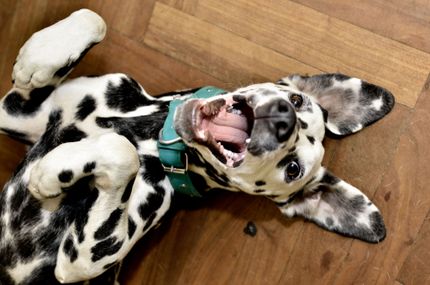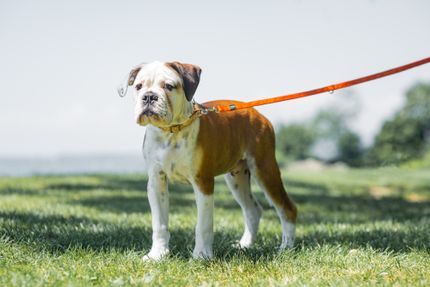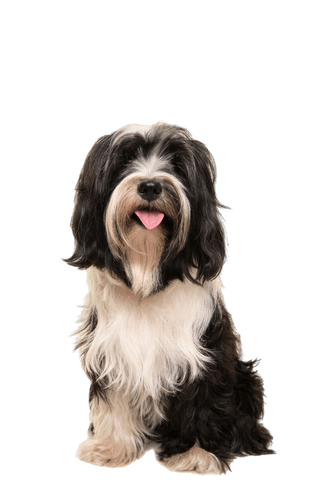
Tibetan Terrier Breed description: Character & Co
Tibetan Terrier
Facts & Origin
What is the origin of Tibetan Terriers?
It is not clear how long exactly the Tibetan Terrier has existed. However, it is assumed that it was already kept in a monastery about 2,000 years ago. Legend has it that the breed was born there by chance: Since the monastery was separated from the outside world for a long time after a natural disaster, only the dogs already living there could reproduce. Later, they accompanied nomads on their tours into the high mountains and helped to herd goats to the summer meadows. To this day, the Tibetan Terrier is still considered a peacemaker and lucky charm in its region of origin. The belief in reincarnation prevented the breed from being exported to other countries. The religion forbid Tibetans trading the animals. This only changed in 1922 when a doctor from Great Britain, Dr. Greig, treated a Tibetan woman from a wealthy family. As a symbol of gratitude after a successful operation, the doctor was gifted a white-golden puppy. Back home, she was so enthusiastic about the charming nature of the animal that she began to breed it herself. In 1930, the breed was recognised by the British Kennel Club.
What are the breed characteristics of Tibetan Terriers?
In their homeland, fans of the breed affectionately call the Tibetan Terrier "snow lion". One reason for this is that its round and flat paws look like snowshoes. They help the little animal to climb over rough and smooth. Also their great ability to jump might surprise you too. Contrary to what its name suggests, the breed is not a terrier. The four-legged friend is also known as Tibet Apso, which is a herding dog. The Tibetan Terrier has an almost square build. The animal carries the medium-long tail curled up over their back. Very typical for the Tibetan Terrier is their swinging step: If they really start moving, you almost get the feeling that your darling can fly.
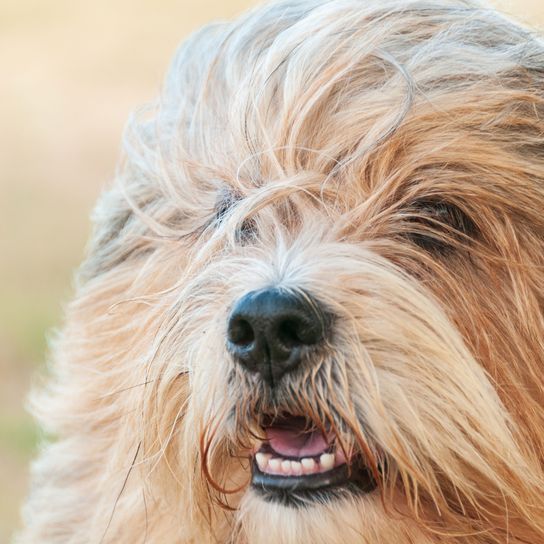
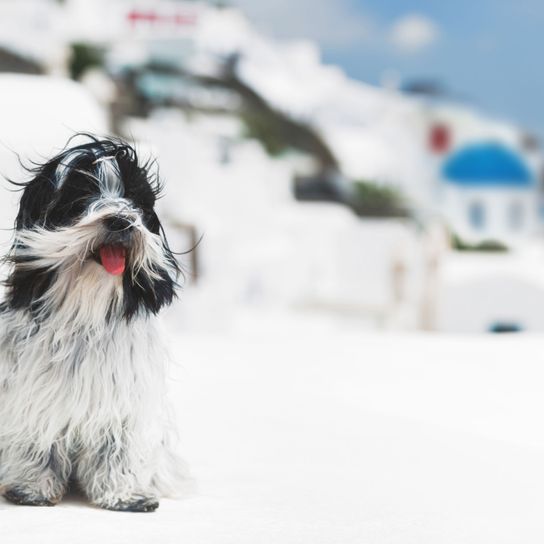
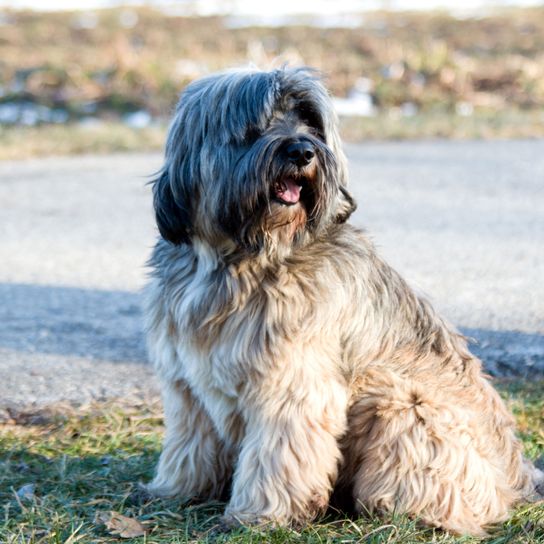
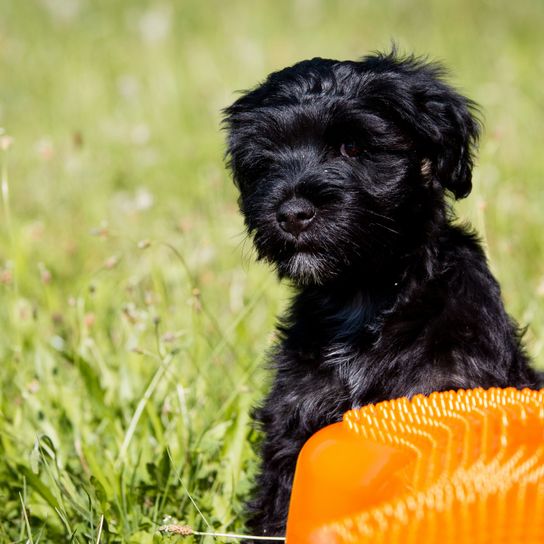
| Alternate Name | Tsang Apso, Tibetan Terrier |
| Origin | Tibet |
| Life expectancy | 12 - 15 years |
| Care requirements | high-maintenance |
| Activity level | average |
| FCI group | Tibetan breeds |
| AKC group | non-sporting group |
| KC group | utility group |
Tibetan Terrier mixes
Attitude, character and temperament of the breed
What are typical characteristics of Tibetan Terriers?
The Tibetan Terrier will surely fascinate you with their funny nature. But you better watch out that they don't twist you around their finger: This intelligent animal learns quickly and can learn basic commands just as quickly as bad habits. Therefore, consistent leadership is required from the very beginning. The breed is initially reserved towards strangers, but for its family they will go through fire. They like to prove their ability to jump and their agility in dog sports. They love excursions into nature and are best off living with active families. No matter whether with Obedience Training, Agility or Dog Dance, the four-legged friend likes to participate in everything. But there is one thing you should consider if you are interested in the breed: The Tibetan Terrier does not like to be left alone.
Character
Usage

Health and breeding information
What are typical diseases of Tibetan Terriers?
The Tibetan Terrier can have a number of diseases, including
- Hip joint dysplasia
- Eye diseases such as retinal detachment called Progressive retina atrophy
- Patella luxation
In general, however, the Tibetan Terrier is a healthy breed.
What should be considered in regards to Tibetan Terrier breeding?
Information about the breed and current litters can be found at the Austrian Club for Tibetan Breeds. Even if you might have to wait some time for a Tibetan Terrier to become available, since they are rarely bred in Austria, it is worth buying from a serious breeder. Then you usually have the possibility to get to know the parent animals and take a look at the pedigree. Furthermore, serious breeders have their animals tested to eliminate the risk for hereditary diseases. If you don't mind taking an older dog into your family, you are doing a good deed by rescuing a Tibetan Terrier in need.


Appearance and coat of the Tibetan Terrier
The Tibetan Terrier stands out with its dense long coat. Their fine undercoat is hidden under the slightly wavy or smooth top coat. The head is just as abundantly hairy as the body, the dog looks particularly cheeky because of its small beard. If you want to buy a Tibetan Terrier, you have the choice between white, cream, gold, grey and black animals. There are also bi- or tri-coloured animals at the Tibetan Terrier breeder. Underneath their dense coat hides a muscular body. When you bring a Tibetan Terrier puppy to your home, it is best to familiarise the little roommate with the brush from the beginning. The coat care will accompany you in your life together, as you should brush the animal thoroughly at least twice a week. This will prevent the dead undercoat from becoming matted with the rest of the coat.
What is the average size of a Tibetan Terrier?
According to the breed standard, males grow to a height of 36 to 41 centimeters, bitches stay a little smaller.
How much does a Tibetan Terrier weigh?
Tibetan Terriers reach a weight of 9 to 12.5 kilograms.
What is the life expectancy of the Tibetan Terrier?
The Tibetan Terrier can live up to 16 years.
| Fur length | long |
| Fur | flat coated |
| Ear shape | Floppy Ear |
| Tail | rolled up |
| Anatomy | rugged |
| Size ♀ | 35 - 41 cm |
| Weight ♀ | 8 - 14 kg |
| Size ♂ | 35 - 41 cm |
| Weight ♂ | 8 - 14 kg |
| Suitable For | Children |
Colors


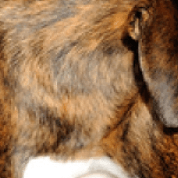
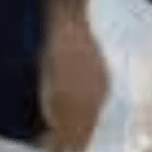
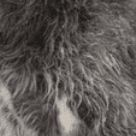
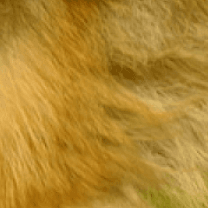
Known Diseases
Breathing problems
Dogs with shortened muzzles can often experience respiratory problems.
Diabetes
The metabolic disease diabetes often occurs in overweight dogs.
Hip dysplasia (HD)
The hip dysplasia or hip joint dysplasia of the dog (HD) is a maldevelopment of the hip joint.
Patellar luxation
Patellar luxation is the term used to describe a displacement of the kneecap, which is one of the most common causes of lameness in dogs.
FAQ
-
A Tibetan Terrier can also stay at home alone for the same amount of time as almost any other breed. With a lot of training, this is already possible at the age of a young dog. However, a dog should never be left alone for more than 3-6 hours.
-
Since the Tibetan Terrier does not undergo a change of coat, it does not shed. This is a special feature of the breed.
-
A Tibetan Terrier puppy costs about 2500 Euro.
Other medium dogs
Useful Articles
You can find articles that might interest you in the dogbible blog to match your favorite breed.
Visit our magazineto stay up to date on dog trends.
To find out more, view our Privacy Policy
Find here the breed that suits you and find out what character traits it has. Here you can also learn more about the origin, size and weight of your favorite breeds.
Matching your favorite breed, you'll find articles that might interest you on the dogbible dog blog.
Ataxia in dogs - causes, symptoms, diagnosis and treatment
Dog is not yet house trained, what should I do?


